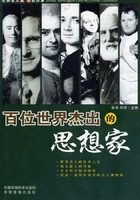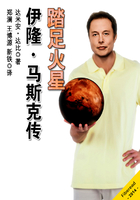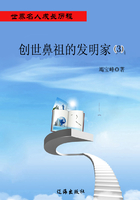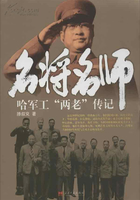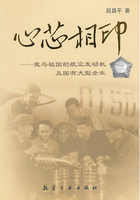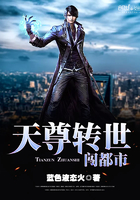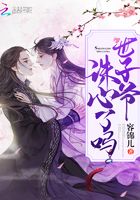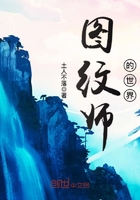A CRITICAL BIOGRAPHY OF LUO ZHENYU (SUMMARY)
Luo Zhenyu, a noted epgrapher and archaeologisth. His ancestral home is Shangyu of Zhejiang Province. But he was born at Huai'an, Jiangsu, in 1866 (on the twelfth date of the sixth month). He was dead at Lushun (Port arthur) in 1940.
He had not left his native place—Huai'an until thirty years old. Devoting his life to study, he completed the ThirteenClassics in fifteen years of age, and then began to study the Huangqing Jingjie (Annotations to the classics by the Qing Scholars) in seventeen, laying a foundation for his further research work. By collating the notable book of Jinshi Cuibian (Collection of Inions on Ancient Bronzes and Stone Tablets), in nineteen he finished his works Dubei xiaojian (Notes on Reading Tablets) and Cunzhuo—zhai Zhaji (Note of Cunzhuo Study), winning high opinion from Yuyue—the great master of the study of the Confucian Classics as he could expound and prove the classical and historical literature by various inions. While he was a private school master from twentyfive to thirty, he read hard many books of Confucian Classics, histories and explanations of their words, especially the Ri Zhi Lu (Notes on Knowledge Accumulated from Day to Day) of Gu Yanwu, and many other works of the military strategists and those of flood prevention work done on the Yellow River for the purpose of laying solid foundation for advanced studies. In the meanwhile, he extended his studies of palaeography, textual criticism, family surnames, etc. , completing some papers per year. Though his efforts were only complimentary and compiling, being confined within the limits of textual criticism during the Qing Dynasty.
In 1896, in coporation with his friend Jiang Bofu he went to Shanghai to run an agricultural journalism and its association, translating the European and Japanese modern agricultural papers and works, studying agriculture and publishing Agricultural Journal in order to spread the knowledge concerning agriculture. For more than ten years hereafter, he dedicated himself to agriculture and its teaching, going twice to Japan to make related investigation. Moreover, he published a magazine Jiaoyu Shijie (Educational World) with its related articles, regulations and information. He became editor of Nongxue Congshu (Series of Agriculture) and Jiaoyu Congshu (Series of Education), successively setting up or participating in setting up Dongfang Xueshe (Oriental Society), the Jiangsu Normal School, and being appointed as diretor of Hubei Agricultural School and of the department of the Jingshi Daxuetang (predecessor of the Peking University). Giving impetus to experimental agricultural development, he was one of the founders of the Chinese modern agriculture. He gave advice to how to run the modern school system after abolishment of the imperial exams, proposing systematically concerned motions. He had many times made inspections on domestic education, offering some contributions to its modernization in its starting point.
Since he served in the Ministry of Education in 1906 and settled down in the Capital, his horizon was broadened, he painfully saw with his own eyes the loss and destruction of the ancient books because of the forthcoming fall of the imperial power, he began to make his efforts to save our national cultural legacy: sorting out, publishing and spreading the ancient texts. When he lived abroad in Japan in 1917-1919, he exerted all his strength to this salvage, with his uncessing efforts till his later years.
After his struggle for forty years, his academic achievements are as follows: (1) For saving the archives of the Imperial vault of the Cabinet, he rushed to transport the archives of the Ming and Qing Dynasties to the Imperial college, which would be burnt according to the memorial of the Ministry of Education. And then he got into debt on his own behalf to buy back the rest of the Imperial archives form the paper store which were sold by the Historical Museum. Besides large quantities of the first-hand historical materials, including the memorials of Ming and Qing, the "huang ce" (Yellow Books), the Imperial archives also contains rare books, which are either in Song and Yuan editions or are nowhere found outside the palace. (2) While he collected, preserved and spread the oracle bones at the Yin ruins, he wrote two monographs of "Yin-shang Zhen-bu Wen-zi Kao (An investigation of oracle Inions of the Yin-shang) and Yin-xu Shu-qi Kao-shi (Interpretations to s at the Yin Ruins), examining Xiaotun of Ahyang as the site of Yin's capital, explaining a group of oracle inions, identifying them as things left by the Yin Dynasty. Hence there is no doubt that the Shang Dynasty entered the civilized stage of history, and thus the study of the oracle bonesappeared. And he became head of the four "Tangs". Again, much attention paid by him to collect the historical relics and published Yin -xu Gu -qi -wu Tu -lu (Pictures of the Ancient Relics of the Yin Sites), he made it common practice to combine the study of oracle bones with the historical relics. (3) He took the initiative to publish and study the Buddhist scrolls discovered from Dunhuang. In 1909 when he was in the Capital he learned about that a large quantity of the Buddhist scrolls of the Sui and Tang Dynasties were discovered at Mogao Caves of Dunhuang, the quintessence of which was stolen by Mark Aurel Stein and Paul Pelliot and been separately transported to London and Paris; the remaining 8000 scrolls were still left at Dunhuang. In order to protect these remaining scrolls after robbery, he called on the nation's attention to take practical measures, asking Liu Shunan, the assistantsecretary of the Ministry of Education, for help to telegraph the governor of Shanxi—Gansu Mao Qingfan to buy them on behalf of the Ministry of Education. But on their arrival at the Capital they were robbed by the "literal thieves" at first, and then monopolized by feudal bureaucrats so that they could not be put on display, Luo Zhenyu could not but use the bibliography left by Pelliot and consulted him to choose some important scrolls in Paris, editing or photolithograph them into the books as Dunhuang Shishi Yishu (Some Lost Books from the Dunhuang Caves), Minsha Shishi Yishu (Some Lost Books of the Desert-Caves), Mingsha Guji Congcan (Remnant-series of the Ancient Texts from the Desert), etc, which were attached to his own posts or theses. These studies assured the contemporary historians that they are rarely new materials for the study of history geography of the north western region in Sui and Tang. His studies might be authoritative, as the European Dunhuang learning had not yet sprung up. (4) He began to record and study the wooden tablets of the Han and Jin Dynasties. When Stein cheated the guard out of the Dunhuang documents in 1908, he also robbed the wooden tablets in large amount from the sites both of the ancient Great Wall at Dunhuang and of an ancient city north to the Loplor of Xinjiang. As Luo Zhenyu was anxious to make them public, he asked for help of a French Sinologist Edourd Chavannes to express his desire; consequently he accepted a checked volum of his own. According to the contents of these wooden tablets (including paper fragments), he classified them into three groups with cooperation with Wang Guowei for re-examination of them, and then published them by the name of Liu-sha Zhui-jian (Tablets Unearthed from the Desert). It immediately drew attention of the scholars, being seen as a Sinologist work in reality as well as in name, pioneering the professional study of the wooden tablets. (5) He initiated the study of the funeral objects: as he lived in the Capital, he accidantally discovered and bought two ancient figures, which were then treated by him as archaeological objects. Many other scholars followed his example so that the ancient figures were out of stock. Luo Zhenyu classified his exquisite objects, compiled them into a book Gu - ming -qi Tu -lu (Recorded Illustrations of the Ancient Funeral Objects), a pioneering work to reproduce the economical conditions, chariot-andclothe system and ideology and culture in ancient China. It thus became a component part of the modern archaeology.
Moreover, Luo Zhenyu collected, sorted out and published a large amount of his predecessors' manus and rare ancient texts. From 1901 to 1936, since several hundred books were checked and published by him, he was regarded as "an honorable and successful collector and disseminator of historical materials."
The formation of "the Luo Zhenyu—Wang Guowei's learning" has made a significant academic breakthrough in modern China. They made further advances on the methodology from books to books, the methology of textual criticism since the Qianlong—Jiaqing times, combining the newly discovered underground materials with written literature, and gradually put it into practice. This new methodology was generalized by Wang Guowei as "dual evidence methodology"; it thus pushed forward the academic development in modern China.


